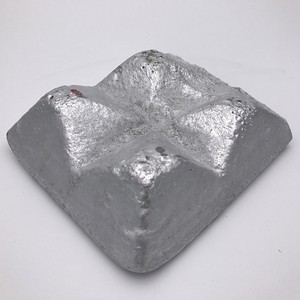High-Temperature Resistance Materials

Join Eric Smith at Stanford Advanced Materials as he discusses the critical role of high-temperature resistance materials with Dr. James Taylor, a leading expert in materials science. These unsung heroes, also known as refractory metals, are essential for industries that operate under extreme heat conditions.
In this episode, discover how materials like tungsten, molybdenum, tantalum, niobium, and rhenium are designed to withstand temperatures that would melt most metals. From aerospace applications to military defense and industrial machinery, these materials ensure the safety and performance of advanced technologies.
Curious about how these materials are shaping the future? Send an inquiry or connect with us on our social media channels to learn more.
Welcome to Stanford Advanced Materials! I’m your host, Eric Smith, and today we’re diving into the world of high-temperature resistance materials, the unsung heroes behind many high-tech industries. To help us explore this topic, I’m thrilled to be joined by Dr. James Taylor, a leading expert in materials science. Dr. Taylor, great to have you here!
Thanks for having me, Eric! It’s exciting to talk about these incredible materials. They play such a crucial role in so many industries.
High-temperature resistance materials, also known as refractory metals, are absolutely essential when it comes to dealing with extreme heat. They’re designed to withstand temperatures that would cause most other metals to melt or deform. It’s fascinating to think about how these materials are used in everything from aerospace to safety equipment.
Absolutely. Take tungsten, for example. It has the highest melting point of any metal—over three thousand four hundred degrees Celsius! It’s incredibly dense and hard, making it perfect for high-stress applications. In military contexts, for instance, it’s used in armor-piercing ammunition. Its density and hardness help penetrate armor effectively, making it a key material for defense.
That’s a great point. Tungsten’s role in defense is really crucial. And then there’s molybdenum, another high-temperature superstar. It’s not just strong but also resistant to creep at high temperatures. This makes it valuable in industrial machinery and tools.
Exactly! Molybdenum’s strength and stability are unmatched. It’s also used in alloys, like the titanium-zirconium-molybdenum alloy, which is fantastic for high-temperature environments.
What about tantalum and niobium? How do they fit into this picture?
Good question. Tantalum is highly resistant to corrosion and keeps its strength even in harsh environments. It’s widely used in electronics, like capacitors, and in chemical processing equipment. Niobium, on the other hand, is less dense and is often alloyed with tungsten. It’s used in high-heat applications like aircraft gas turbines and nuclear reactors.
And then there’s rhenium, which is a bit of a recent addition to the refractory metals group.
Right, rhenium is known for enhancing ductility and tensile strength when alloyed with other metals. It’s crucial in high-temperature turbine engines and aerospace components. Plus, it’s used in the chemical industry due to its catalytic properties.
It sounds like these materials are absolutely indispensable. Their ability to withstand extreme conditions is vital for many high-tech applications.
Definitely. Without them, we wouldn’t have the advanced technologies we rely on today. Their role in ensuring safety and performance in extreme environments cannot be overstated.
Thanks for shedding light on these fascinating materials, Dr. Taylor. It’s clear that high-temperature resistance materials are truly the backbone of modern industry.
My pleasure, Eric. It’s been great discussing these critical materials.
To our listeners, thanks for joining us on Stanford Advanced Materials. If you enjoyed today’s conversation, make sure to subscribe for more insights into the materials that drive our technological advancements. Until next time, keep exploring the amazing world of advanced materials!

